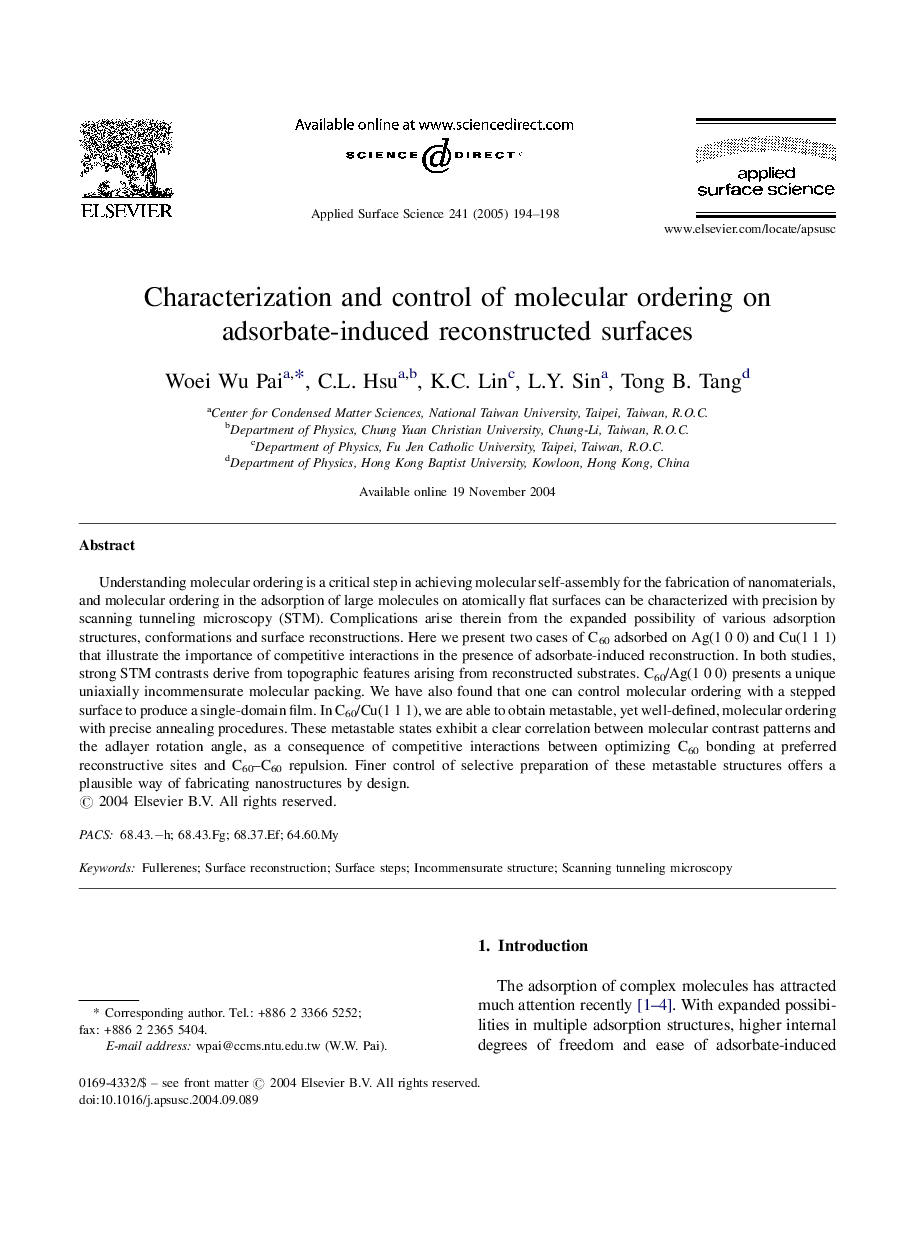| Article ID | Journal | Published Year | Pages | File Type |
|---|---|---|---|---|
| 9567537 | Applied Surface Science | 2005 | 5 Pages |
Abstract
Understanding molecular ordering is a critical step in achieving molecular self-assembly for the fabrication of nanomaterials, and molecular ordering in the adsorption of large molecules on atomically flat surfaces can be characterized with precision by scanning tunneling microscopy (STM). Complications arise therein from the expanded possibility of various adsorption structures, conformations and surface reconstructions. Here we present two cases of C60 adsorbed on Ag(1Â 0Â 0) and Cu(1Â 1Â 1) that illustrate the importance of competitive interactions in the presence of adsorbate-induced reconstruction. In both studies, strong STM contrasts derive from topographic features arising from reconstructed substrates. C60/Ag(1Â 0Â 0) presents a unique uniaxially incommensurate molecular packing. We have also found that one can control molecular ordering with a stepped surface to produce a single-domain film. In C60/Cu(1Â 1Â 1), we are able to obtain metastable, yet well-defined, molecular ordering with precise annealing procedures. These metastable states exhibit a clear correlation between molecular contrast patterns and the adlayer rotation angle, as a consequence of competitive interactions between optimizing C60 bonding at preferred reconstructive sites and C60-C60 repulsion. Finer control of selective preparation of these metastable structures offers a plausible way of fabricating nanostructures by design.
Keywords
Related Topics
Physical Sciences and Engineering
Chemistry
Physical and Theoretical Chemistry
Authors
Woei Wu Pai, C.L. Hsu, K.C. Lin, L.Y. Sin, Tong B. Tang,
